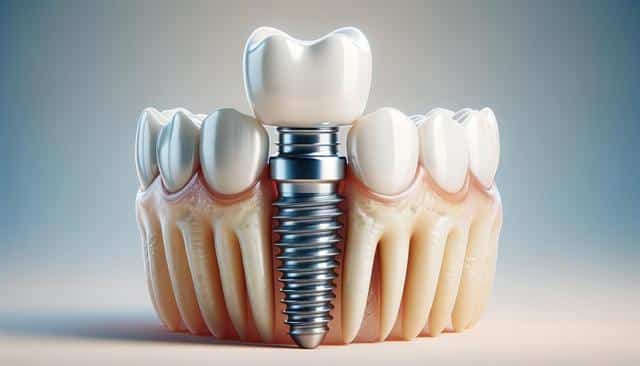Understanding Dental Implants
Dental implants have become a highly regarded choice for those looking to replace missing teeth and enhance their oral health. As artificial roots typically made from titanium, dental implants are surgically inserted into the jawbone to support replacement teeth or bridges. They offer a durable and natural-looking alternative to dentures and bridges. The process requires a few stages, including an initial consultation, the surgical placement of the implant, and a recovery period before the final crown is attached. Due to their ability to fuse with the bone in a process called osseointegration, dental implants provide stability and prevent jawbone loss, making them a reliable long-term solution.
The Benefits of Dental Implants
Choosing dental implants comes with numerous benefits that can significantly improve one’s quality of life. Some of the key advantages include:
- Improved Appearance: Dental implants look and feel like natural teeth.
- Enhanced Speech: Unlike ill-fitting dentures, implants won’t slip, allowing for clear speech.
- Comfort and Convenience: Implants become a part of you, eliminating the discomfort of removable dentures.
- Durability: With proper care, implants can last a lifetime.
- Improved Oral Health: Implants don’t require reducing other teeth, which improves long-term oral health.
These benefits contribute to a dramatic improvement in both functional and aesthetic aspects, helping individuals regain confidence in their smile and daily interactions.
Accessibility and Dental Assistance
One of the concerns many individuals face when considering dental implants is the cost. However, there are various dental assistance programs and financing options that can make this procedure more accessible. Dental insurance might cover a portion of the costs, and some dental clinics offer payment plans to spread the expenses over time. Additionally, some government programs and nonprofit organizations provide financial aid for dental treatments, especially for those in need. It’s important to research and discuss these options with your dental professional to find a solution that suits your financial situation.
The Implant Procedure: What to Expect
Understanding the dental implant procedure can help alleviate any anxiety about the process. The journey typically begins with a thorough evaluation, including X-rays and impressions, to determine the best treatment plan. The surgical phase involves placing the implant into the jawbone, followed by a healing period where osseointegration occurs. Once healed, an abutment is attached to the implant, acting as a connector for the final crown. This step-by-step approach ensures precision and effectiveness, ensuring that the result is both functionally sound and cosmetically pleasing.
Long-Term Care for Dental Implants
Maintaining your dental implants involves regular oral hygiene practices similar to caring for natural teeth. This includes brushing twice a day, flossing daily, and attending regular dental check-ups. While the implants themselves cannot decay, the surrounding gum and bone can still be vulnerable to disease. It’s crucial to follow your dentist’s advice on care routines to preserve the longevity of your implants. Avoiding habits like smoking, which can affect the success of the procedure, is also recommended. With diligent care, dental implants can provide a lasting and effective solution for your missing teeth.
Conclusion: Restoring Confidence and Functionality
Dental implants offer an outstanding solution for those seeking to restore their smile and oral functionality. As a highly rated option, they provide both aesthetic and practical benefits that can significantly enhance one’s quality of life. With the availability of dental assistance programs, more individuals can access this renowned procedure, ensuring that financial constraints do not hinder their path to improved oral health. By choosing dental implants, you are investing in a future of confident smiles and excellent oral wellness.
